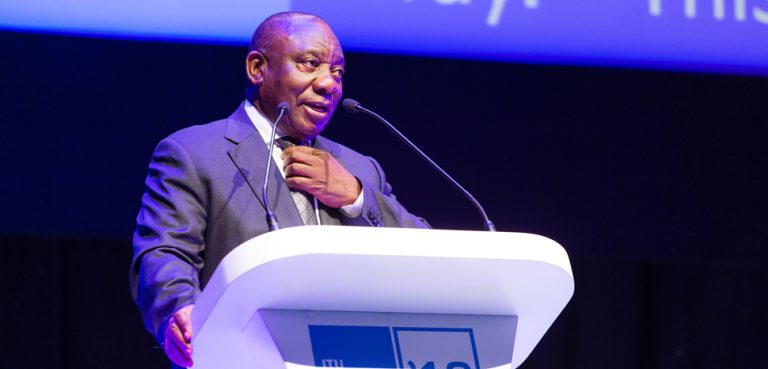South Africa is facing an energy crisis. The once distinguished national public energy provider, Eskom, has been driven to the point of collapse by “years of corruption, incompetence and political meddling.” Under the Presidency of Jacob Zuma, Eskom went from making over one-billion-rand profit in 2008 to a 2.3-billion-rand loss in the last financial year. The Eskom crisis has only depressed an already strained economy.
This critical situation has left Cyril Ramaphosa, the presidential incumbent, in a tough position. To address South Africa’s myriad problems, Ramaphosa must act to clean up and streamline his government. He has to claim power and reform a party filled with discredited Zuma loyalists. To do so, he has surrounded himself with a prudent group of advisers and ministers who have established expertise on national energy issues. Ramaphosa, an assertive trade unionist turned billionaire businessman, is now well-placed to lead South Africa towards a new energy regime. The crisis also presents an opportunity to expand into the alternative energy sector.
Transitioning from coal to clean energy
South Africa remains largely dependent on coal for energy production. Eskom generates 90% of its electricity from an increasingly ‘dirty’ stockpile that is sourced from mines further and further away from ageing power plants. In recent weeks, the country has experienced power outages, locally referred to as ‘load shedding.’ Despite the 2016 statement from Zuma that “we will never have load shedding again,”, the problems have worsened. Load shedding has even occurred over weekends and in the summer, periods when demand is low.
Minister for Public Enterprises Pravin Gordhan recently conceded that “Eskom is currently facing massive problems of a structural nature, operational nature and financial nature.” In order to address these concerns, President Ramaphosa has announced a strategic change to Eskom’s business model. The utility will be reconfigured into three separate entities: generation, transmission and distribution.
Eskom’s reconfiguration forms part of the government’s new Integrated Resource Plan. According to the draft plan, the government will pursue “a diversified energy mix” and source 42% of energy needs from renewables by 2030. The proposal to massively scale down coal dependency is being actively opposed by powerful labor unions. Though the government has pledged a “just transition,” unions are unsettled by the prospect of massive job loss in a country already struggling with unemployment.
While those job concerns are certainly legitimate, South Africa has a significant need – and potential gains – from new renewable energy investments. Furthermore, its renewable procurement programs have achieved significant success. The Renewable Energy Independent Power Producer Procurement Programme, introduced in 2011, has been hailed as one of the world’s most successful renewable power producer schemes. The appeal of renewables is clear: not only do they provide the prospect of a cleaner future, but they are also expected to become cheaper over time, especially as storage capabilities improve.
A need for leadership
The Integrated Resource Plan and the renewable programs alone are not sufficient; determined leadership and execution is also needed. Messages from the political administration have been mixed on this front. They appear to be appeasing all sides. Mineral Resources Minister Gwede Mantashe pledged that a transition from coal will take place while warning the coal industry to “wake up; you are under attack.” While broad posturing and little action are to be expected from campaigning parties in the weeks leading up to the May 8 general election, the governing party must work now to ensure the new government hits the ground running.
With Ramaphosa’s African National Congress likely to maintain its majority after the election, the president is showing clear leadership by taking direction from the National Development Plan – the strategic document that mostly gathered dust under Zuma. In a recent statement, the presidency has committed to pursue the significant renewable energy targets set out in the Development Plan. It has strategically pointed to energy as “a key enabler in South Africa’s trajectory towards socio-economic growth and development.”
South Africa is undoubtedly facing an energy crisis, but it’s one that also presents clear opportunities for the future. The president is showing signs that he will indeed do the work to achieve this end, and execute the strategic programs as detailed in the Development Plan.
The views expressed in this article are those of the authors alone and do not necessarily reflect those of Geopoliticalmonitor.com or any institutions with which the authors are associated.




